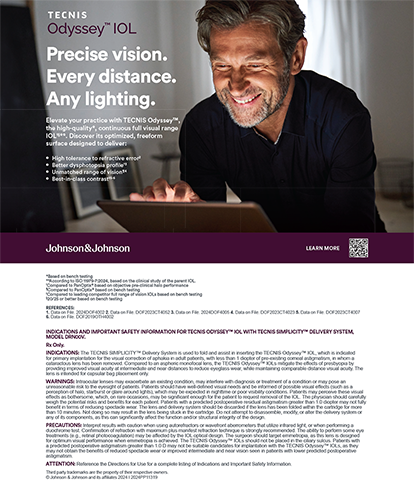In September, I had the opportunity to attend my first ME Live, which this year was held in Nashville, Tennessee. For those who are not familiar with it, ME Live is an annual meeting hosted by MillennialEYE, sister publication to CRST. The meeting fosters peer education among millennial-minded physicians, and it promotes interaction and networking with both fellow surgeons and industry representatives. All of this is accomplished in a relaxed yet energetic atmosphere, where participants are encouraged to get creative, post to social media, and even use props during their talks.
I have been to countless ophthalmology meetings throughout the years but none as unique as ME Live. Listening to the presenters and watching the audience, it was undeniable that everyone was engaged, and I know I left Nashville feeling a little extra inspired. In this article, I review several talks given at ME Live that were especially well received. (Some of these topics will be the subjects of further coverage in CRST.) If you are considering adding another meeting to your calendar in 2018, I would cast a vote for ME Live.
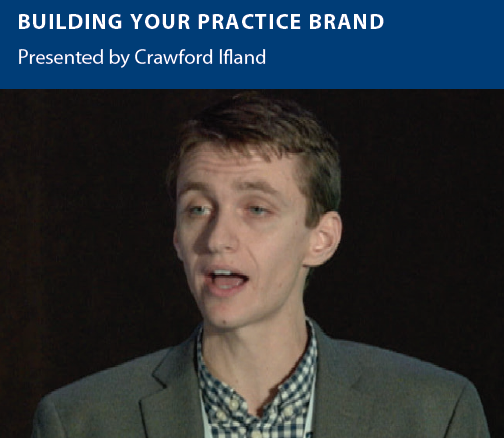
There is power in building a patient-centered brand, Mr. Ifland said at ME Live. Mr. Ifland, the founder and creative director of Messenger, a creative agency dedicated to the ophthalmic industry, reminded surgeons that branding goes well beyond a practice’s logo: It is the sum of all touchpoints that people have with the practice. From how the front desk personnel answer the telephone and how patients are greeted onsite to how the office looks and what magazines are available in the waiting room; from the practice’s website and online booking capabilities to the practice’s presence on social media—branding should be comprehensive.
Because it takes between five and seven interactions before patients will remember a brand, it is important for physicians to look at the big picture and to create consistent messaging across all facets of their brand. The strongest brands have three essential elements: familiarity, quality, and consideration.
Why does branding matter? It can help the physician to strengthen his or her overall image, Mr. Ifland said. Branding embraces the fact that surgical outcomes are only a subset of the patient’s experience. Patients are less likely to remember what technology was used in the OR and more likely to remember their overall experience with the practice, he said in his conclusion.

The health care landscape is changing constantly, and the only way to be successful is to stay competitive—something that requires continual growth in one’s practice, Dr. Matossian said at the meeting. Two ways that physicians can take charge of leading growth are through staff development and training and by integrating new products and services.
Dr. Matossian’s pointers for staff development included incorporating a 2-hour shadowing experience for prospective hires; creating benchmark criteria that must be met by new employees by days 30, 60, and 90; dedicating 1 hour a week to employee training; and appointing a mentor for each new hire. At Dr. Matossian’s practice, mentors receive a payout every 3 months for an entire year, which keeps them motivated to be good mentors.
Integrating new products or services requires a blueprint, Dr. Matossian explained. Compile a written plan, establish bulleted action points, identify parties responsible for each element of the blueprint, and create a timeline for implementation. Two integral components of success with new products and services are checking progress on a regular basis and being realistic with the timeline. The bottom line, Dr. Matossian said, is “do sweat the small stuff” and take a team approach to growth.
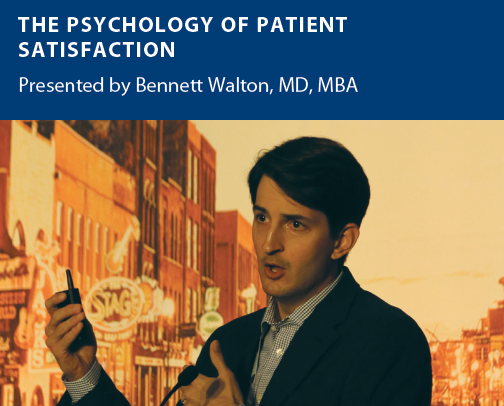
Quality always comes first, and one way to ensure that patients receive a quality experience is to know the patient’s experience inside and out, Dr. Walton said. Walk through your center as if you were a patient: sit in the waiting room, go under the laser, learn the wait times, and listen to your technicians’ workups. This can help you to educate patients with a personalized approach and to communicate realistic expectations.
Technicians are an extension of the physician, Dr. Walton explained at ME Live, and therefore, they should not only know how to connect with each patient but also provide the same quality of care as the physician.
Other points that are helpful to enhance patients’ satisfaction include remembering that diagnostic images are powerful educational tools, making sure that patients are not presented with too many surgical options (which can reduce satisfaction with good choices), and not rushing postoperative follow-up.
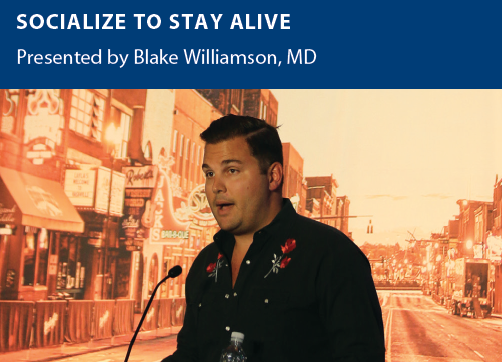
In terms of social media outlets, cataract- and presbyopia-aged patients live on Facebook, Dr. Williamson said in Nashville. Facebook is the king of social media, he said, because it allows one to create hyper-focused and highly targeted advertising based on geographics, demographics, and psychographics.
During his talk, Dr. Williamson identified several strategies that can help to engage potential patients on Facebook. The biggest is something he calls “HT2,” which stands for humor, heartstrings, technology, and tell a story. In a nutshell, if a post includes one or more of these elements, it will resonate with the audience. Other advice Dr. Williamson shared included making sure the practice’s profile has professional photos, positive reviews, and clear access to its website and phone number. Further, one should not be afraid to boost posts, a paid feature that allows a message to reach a wider audience.
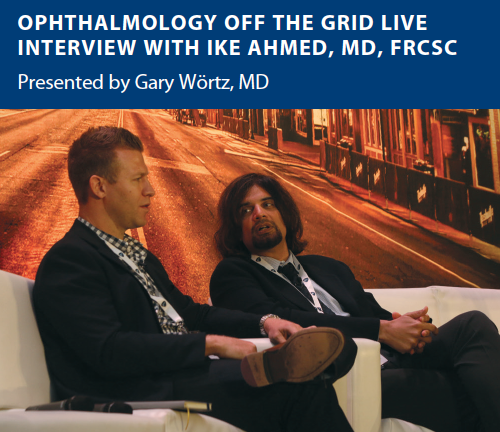
Sharing how experiences from childhood helped to shape his career path in ophthalmology and glaucoma, Dr. Ahmed said that being different helped him think differently from everyone else. Glaucoma was not sexy but was important, he said, and transforming it into a surgical field seemed possible. Choosing a fellowship at a practice in Utah that was already doing things differently, such as nonpenetrating surgery and nontrabeculectomy procedures, Dr. Ahmed was exposed to the insights he needed to introduce the idea of microinvasive glaucoma surgery.
One of the biggest lessons Dr. Ahmed’s interview drove home was that, in life, one can either follow the crowd or, with a little bit of courage and challenging of the norm, one can make big things happen.
The whole interview is available on Ophthalmology Off the Grid, an Eyetube podcast hosted by Dr. Wörtz.
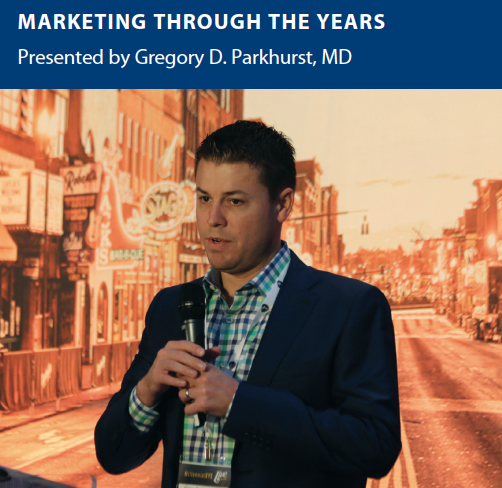
Traditional refractive surgery marketing creates a competitive environment, Dr. Parkhurst warned, adding that this is exactly what refractive surgeons have been dealing with for the past 20 years. Marketing tactics that are self-focused, meaning that they are aimed at increasing one’s market share instead of targeting total market growth, or those that employ bait-and-switch or reduced pricing strategies, fall into this category of traditional refractive surgery marketing.
Dr. Parkhurst said his practice uses a completely different philosophy in marketing: focusing on messaging the solutions that are available to patients rather than a particular technology that is available. Using this approach, in the past year, Parkhurst-NuVision has increased its surgical volume by 40%—despite being the highest-priced practice in the market. The key, he said, is to market around the three milestones of vision development: refractive surgery, cataract surgery, and presbyopia.
With regard to refractive surgery marketing specifically, one big pointer is to engage patients who do not necessarily know that they are refractive surgery candidates, Dr. Parkhurst told the audience at ME Live.




